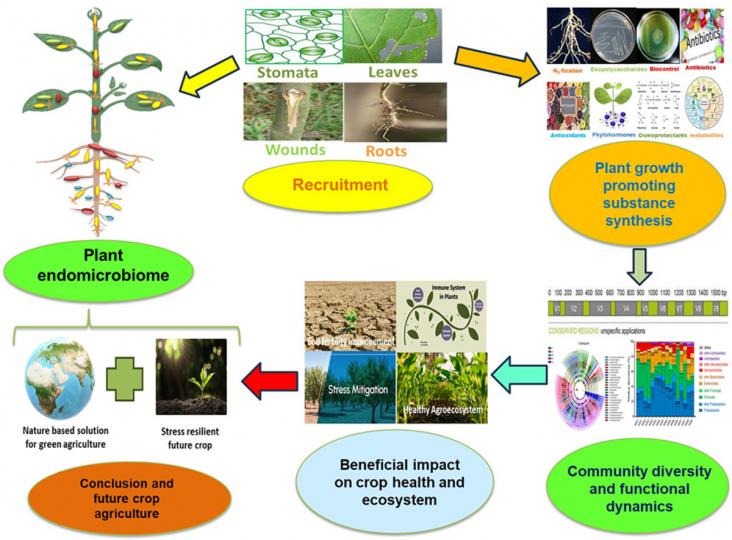Food insecurity among Indigenous peoples in Canada is a significant public health issue, impacting all four pillars of food security: availability, access, utilization, and stability. A literature review identified 91 studies indicating that economic disadvantages, high food prices, lack of transportation, and climate change are major contributors to food insecurity. Traditional food systems are disrupted by loss of knowledge, poor food quality, and food safety concerns. Addressing these issues requires culturally specific integrated approaches to improve food availability, cost, knowledge, and quality.
This article ties to SDG3 by examining new methods to assess impact of climate change

Plants have a microbiome, a diverse community of microorganisms, including bacteria, fungi, and viruses, living inside and on their tissues. This review article contains deeper insight in endomicrobiome related research work in last years, recruitment, niche development, nutrient dynamics, stress removal mechanisms, bioactive services in plant health development, community architecture and communication, and immunity interplay in producing stress resilient future crop.

Strigolactones (SLs) are a new class of plant hormones that play a significant role in regulating various aspects of plant growth promotion, stress tolerance and influence the rhizospheric microbiome. GR24 is a synthetic SL analog used in scientific research to understand the effects of SL on plants and to act as a plant growth promoter.
High soil temperature is a key environmental factor threatening food production in hot climates, especially in the era of global warming. Additionally, high soil evaporation under sunlight leads to significant water loss. Currently, there is a lack of effective and feasible soil management methods during hot seasons. This paper presents a soil-cooling strategy based on radiative cooling mulch.
In this paper the authors show how the heterogeneity in cities means that individual cities need specific low-carbon roadmaps, rather than a one-size-fits-all approach
A study published by Mukhopadhyay et al., 2023 investigates the long-term impact of subsurface drainage (SSD) on soil quality restoration and sugarcane productivity in waterlogged saline Vertisols in India. By using soil and water samples together with a farmer field survey, the authors showed that SSD significantly reduced soil salinity and improved various soil properties, leading to increased sugarcane yields by up to 585.5%. Farmers' perceptions indicated that SSD technology could substantially improve soil conditions and crop yields, and large-scale adoption of the technology will support the Sustainable Development Goals related to Land, No Poverty, and Zero Hunger in saline soils of India.
The importance of an updating of fundamental energy law to achieve net zero carbon emissions by 2050 in the energy sector.
This content advances UN SDG 10 and 13 goals highlighting the importance of inclusive approaches, incorporation of indigenous and traditional culture and knowledge, innovation as well as working with local communities to provide benefits both for ecosystem and wildlife conservation, and climate-resilient livelihoods.
This paper supports SDG 3 and 13 by highlighting that China risks losing its health gains within a single generation if society fails to adapt to climate change, and effective adaptation strategies need to consider China’s urbanization trends, underlying non-communicable diseases, an aging population, and future pandemic threats.
